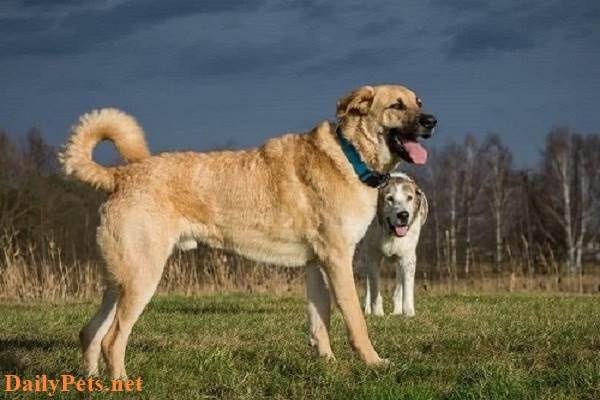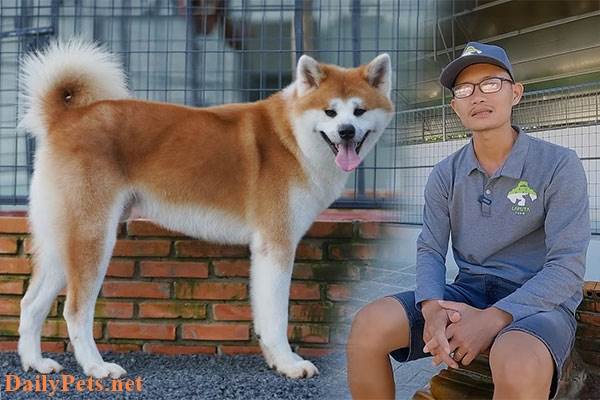The Kangal dog, the renowned national dog of Turkey, is not as well-known to the masses despite its fame. Let’s explore the Kangal dog breed and what makes them special through this article on DailyPets.net!
Origin and History of the Kangal Dog Breed
The Kangal dog, also known as the Anatolian Shepherd, is believed to be a guardian dog breed originating from the town of Kangal in the province of Sivas, Turkey. The emergence of this breed is closely linked to the essential need for protection by the people of that time.
Long ago, the people of Kangal town had to face the constant threat of wild animals like wolves and bears, which continuously attacked their livestock, resulting in significant economic losses. They needed a “hero” with the strength, agility, and intelligence to stand up against these creatures.
At this time, the townsfolk discovered the Kangal dog breed, which possessed all the necessary attributes to help them drive away the marauding beasts. They began breeding this dog, and after some time, the Kangal dogs proved their worth as protectors of the livestock, dissuading wolves and bears from causing havoc.
As a result, the Kangal dog breed was recognized as one of the world’s top guard dog breeds, and Turkey, of course, took great pride in this achievement. To protect this source of pride, Turkey imposed export bans on Kangal dogs (although these bans have been relaxed in recent years, they are still strictly controlled).
Not only that, they also expressed their pride by featuring the Kangal dog on postage stamps and national coins. Additionally, a significant number of personnel in academic institutions worked day and night to document pedigrees, research breeding techniques, and study this dog breed.
Although Kangal is officially recognized as the national dog breed of Turkey, there were some historical hypotheses about its origin, suggesting that Kangal dogs came from Abyssinia, Babylon, or were a pet of the Kanli tribe. These hypotheses have all been debunked due to a lack of evidence.
Because of their bravery, North American and European countries have continuously sought to import this dog breed to protect their livestock. Naturally, they had to pay a relatively high price at that time and even today.
Physical Characteristics of the Kangal Dog
When it comes to the appearance of a Kangal dog, the first words that come to mind are “large” and “powerful.” They have an extremely robust bone structure. Males can stand between 77 to 86 cm tall and weigh 50-66 kg, while females are 72-77 cm tall and weigh 41-54 kg.

Kangal (Anatolian Shepherd).
They have a short, thick coat of gray or cream color covering their entire body. The Kangal dog’s short and dense coat helps them adapt to Turkey’s harsh weather conditions. Their fur is usually a light tan, but it can have darker or gray patches. Their fur is unique because it is only black around the face (sometimes with black patches on the ears), so they are often called “black-faced” dogs.
Their ears are triangular and hang down, and their tails are thick and slightly curved. They have large, brown or amber-colored eyes.
However, what truly sets the Kangal dog breed apart is their incredibly powerful bite. Even the Tibetan Mastiff has to be envious of their biting force. Their teeth are large and sharp, allowing them to overpower much larger prey.
Through tests, it has been shown that although the Tibetan Mastiff has a bite force of up to 650 pounds per square inch (which already surpasses that of bears and wolves), the Kangal dog can exert a force of up to 743 pounds per square inch, making it the most powerful dog breed in the world.
Not only that, they are not affected by their large size and can sprint at speeds of 50 km/h, ready to chase and intimidate any wild animal intending to infringe on their owner’s property.
According to Ngân, the Turkish government has been correct in implementing special regulations for this breed. Recently, a video appeared online of a Kangal dog facing off against a Pitbull, and of course, the Kangal emerged as the victor, but it raised concerns about the violent nature of such games.
Personality Traits of the Kangal Dog
In essence, Kangal dogs are wild, aggressive, vigilant, and highly focused. Part of this nature arises from their daily duty of protecting their “siblings” from danger. Historically, Muslim people were not allowed to keep dogs in their homes, so these dogs often had to roam the pastures, leading to a somewhat less affectionate disposition.
However, Kangal dogs are very cautious around strangers and potential threats. When it comes to their owners, they are affectionate, calm, and highly tolerant, even with small children. They can easily become the protective guardians who take your children out for a walk without fear of problems or even entertain them for hours while you work.
Nevertheless, it is advised not to keep Kangal dogs indoors. They are naturally inclined to run and jump and can be somewhat unruly, similar to Husky dogs. Indoor furniture needs to be handled carefully as it may be destroyed. Additionally, limited space, boredom, and the owner’s inexperience can make Kangal dogs uncontrollable, especially at night. You wouldn’t want to imagine the consequences, trust me!
Some Health Issues in Kangal Dogs
Like many other dog breeds, Kangal dogs are prone to some health issues. Here are some of the most common health problems:
- Hip Dysplasia: Hip Dysplasia is a genetic condition affecting the hip joint, causing pain and discomfort. Regular exercise, a healthy diet, and proper weight control can help prevent and manage hip dysplasia.
- Ear Infections: Kangal dogs have long, soft ears prone to trapping water and bacteria, leading to ear infections. Regular and proper ear cleaning can help prevent this problem.
- Eye Issues: They may be susceptible to certain eye issues like cataracts and progressive retinal atrophy. Regular veterinary check-ups and eye exams can help detect and manage these issues.
- Bloat: This is a life-threatening condition where the stomach fills with gas and twists. Being a large and deep-chested breed, Kangal dogs may be more susceptible to bloat. Feeding smaller, more frequent meals and avoiding exercise immediately after eating can help prevent bloat.
- Heart Issues: They may be prone to heart problems, such as dilated cardiomyopathy.
How to Care for Kangal Dogs
Although large, Kangal dogs eat significantly less than other dog breeds. Typically, they only need two meals a day to maintain their body.
If you are feeding them a raw diet, it’s important to provide a balanced diet with ample protein, vitamins, and minerals or follow the advice of a veterinarian. If you are feeding them commercial dog food, it’s essential to follow the recommended feeding guidelines on the packaging and not overfeed to ensure that Kangal dogs develop normally.
One crucial thing to note is that clean water is extremely important for Kangal dogs. They consume significant water daily, so owners need a sufficient supply. Since they are clean animals, they will never drink water that is dirty or has been sitting for a relatively long time.
Taking care of Kangal dogs is relatively straightforward because they have their roots in the “wild dog.” You can bathe them every one or two months or more frequently if you prefer.
The Price of Kangal Dogs
Due to the challenging nature of raising Kangal dogs and the protection from the Turkish government, this dog breed is not widespread globally.
For these reasons, importing a Kangal dog can be quite expensive, with an average cost ranging from $1,000 to $1,200. The price can exceed $5,000 for dogs with exceptional qualities, which is normal.





